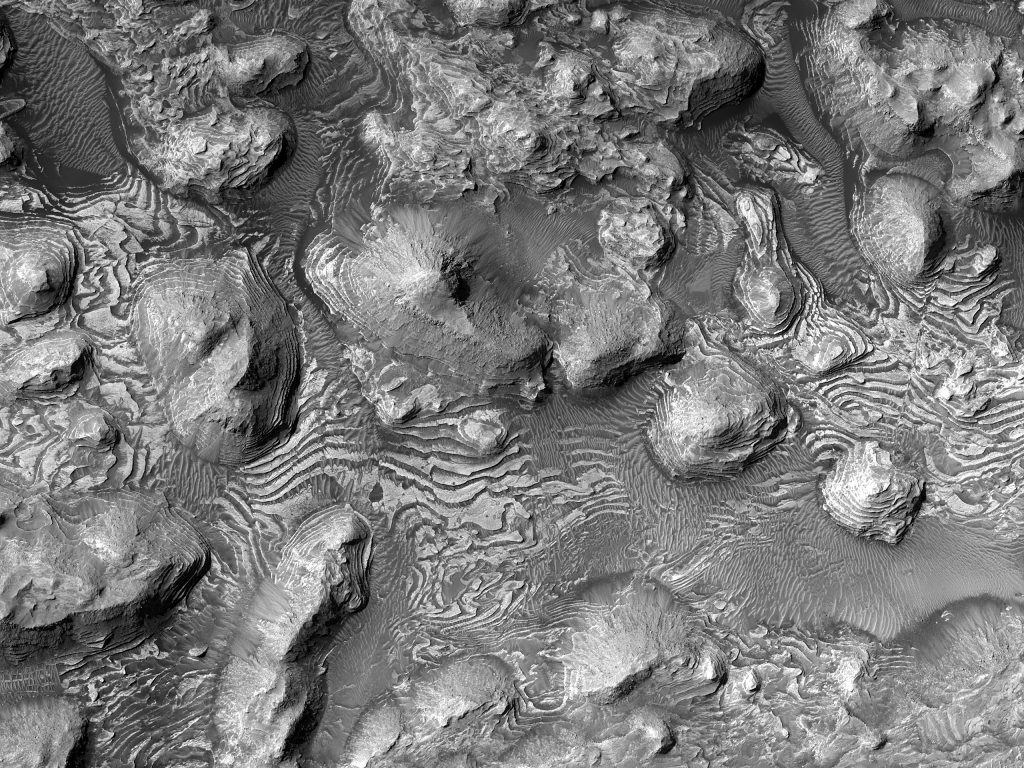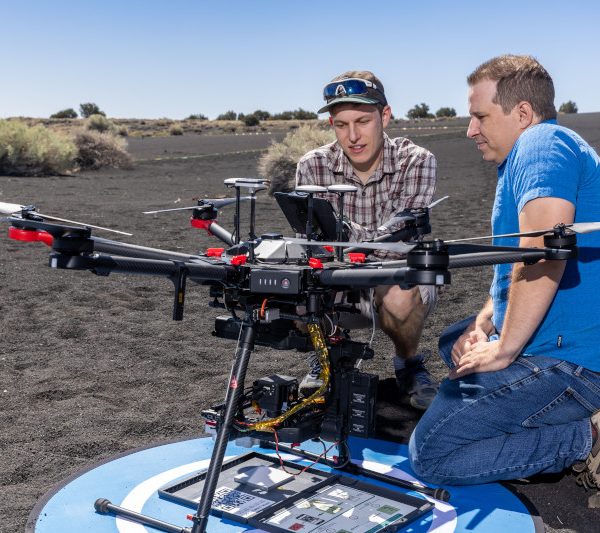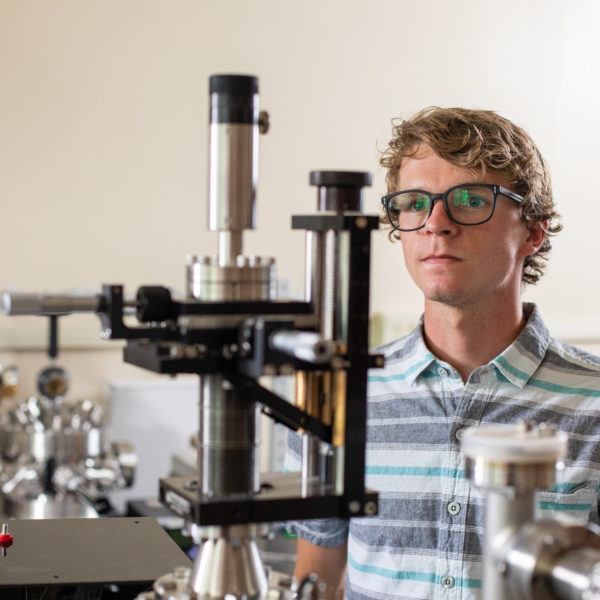
NAU PhD candidate Ari Koeppel, as part of a team of scientists from Northern Arizona and Johns Hopkins Universities, recently discovered that water was once present in a unique but brief manner in a region of Mars called Arabia Terra.
Arabia Terra is in the northern latitudes of Mars. Named in 1879 by Italian astronomer Giovanni Schiaparelli, this ancient land covers an area slightly larger than the European continent. Arabia Terra contains craters, volcanic calderas, canyons, and beautiful bands of rock reminiscent of sedimentary rock layers in the Painted Desert or the Badlands.
These layers of rock and how they formed was the research focus for Ari Koeppel, Astronomy and Planetary Science PhD candidate, along with his advisor, Dr. Christopher Edwards, and Andrew Annex, Kevin Lewis, and undergraduate student Gabriel Carrillo of Johns Hopkins University. Their study, titled “A fragile record of fleeting water on Mars,” was funded by the NASA Mars Data Analysis Program and recently published in the journal Geology.
“We were specifically interested in using rocks on the surface of Mars to get a better understanding of past environments three to four billion years ago and whether there could have been climatic conditions that were suitable for life on the surface,” Koeppel said. “We’re interested in whether there was stable water. How long there could have been stable water. What the atmosphere might have been like. What the temperature on the surface might have been like.”
In order to get a better understanding of what happened to create the rock layers, they focused on thermal inertia. Thermal inertia defines the ability of a material to change temperature. Sand, with small and loose particles, gains and loses heat quickly, while a solid boulder will remain warm long into the evening. By looking at surface temperatures, they were able to determine the physical properties of rocks in their study area. They could tell if a material was loose and eroding away when it otherwise looked like it was solid. “No one had done an in-depth thermal inertia investigation of these really interesting deposits that cover a large portion of the surface of Mars,” said Edwards.
To complete the study, Koeppel used remote-sensing instruments on orbiting satellites. “Just like geologists on Earth, we look at rocks to try to tell stories about past environments,” Koeppel said. “On Mars, we’re a little bit more limited. We can’t just go to a rock outcrop and collect samples—we’re pretty reliant on satellite data. So, there’s a handful of satellites orbiting Mars, and each satellite hosts a collection of instruments. Each instrument plays its own role in helping us describe the rocks that are on the surface.”
Through a series of investigations using this remotely gathered data, they looked at thermal inertia, plus evidence of erosion, the condition of the craters, and what minerals were present.

“We figured out these deposits are much less cohesive than everyone previously thought they were, indicating that this setting could only have had water for only a brief period of time,” said Koeppel. “For some people, that kind of sucks the air out of the story because we often think that having more water for more time means there’s a greater chance of life having been there at one point. But for us, it’s actually really interesting because it brings up a whole set of new questions. What are the conditions that could have allowed there to be water there for a brief amount of time? Could there have been glaciers that melted quickly with outbursts of huge floods? Could there have been a groundwater system that percolated up out of the ground for only a brief period of time only to sink back down?”
Koeppel started in engineering and physics but switched to geological sciences during his master’s program at The City College of New York. He came to NAU to work with Associate Professor Christopher Edwards and immerse himself in the thriving planetary science community of Flagstaff.
“I got into planetary science because of my excitement for exploring worlds beyond Earth. The universe is astoundingly big, even Mars is just the tip of the iceberg,” Koeppel said. “But we’ve been studying Mars for a few decades now, and at this point, we have a huge accumulation of data. We’re beginning to study it at levels that are comparable to ways we’ve been able to study Earth, and it’s a really exciting time for Mars science.”
Caption, top photo: In support of their Mars research, Koeppel (on the left) and Edwards (right) conducted an analog study in a cinder field near Flagstaff, Arizona. At the Flagstaff study site, they were able to collect data in the field and compare it with the data collected from the drones, simulating satellite imagery.






